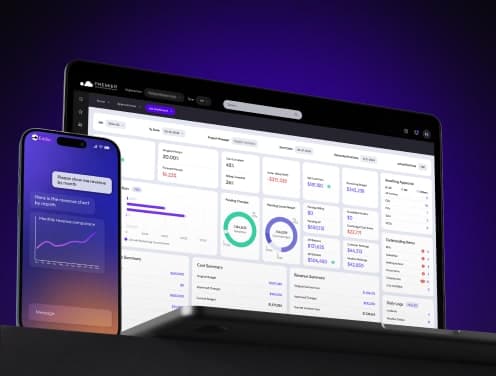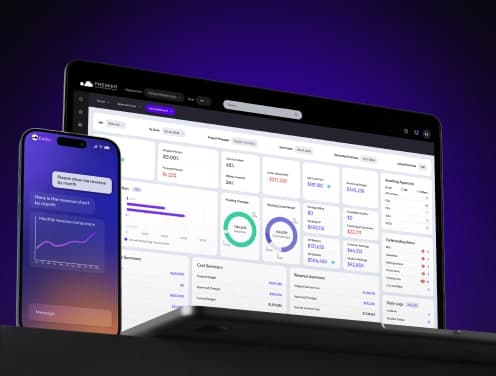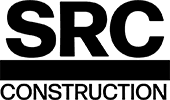
The Complete Guide to Construction Estimates: Everything You Need to Know
Accurate construction estimates can make or break any building project. Your estimate acts as the financial blueprint that determines your bottom line during project planning.
Construction estimating calculates all project costs in the preconstruction phase. Labor costs make up about 50% of the construction project budget. Most construction businesses add between 5-10% of the contract price to cover contingency. A good estimation looks beyond the original costs and examines possible problems that might surface throughout the project's life.
The precision of your cost estimates directly shapes your work timeline and budget compliance. This piece walks you through everything about construction estimates - from basic concepts and workflows to proven practices that help you avoid getting pricey mistakes.
What you'll learn:
- Construction estimates and their critical role
- A detailed estimating process walkthrough
- Estimate types for each project phase
- Elements that create a detailed estimate
- Tools and methods to boost accuracy
- Practical ways to improve your estimating skills
What is a Construction Estimate?
Construction estimates are the foundations of every successful building project. A construction estimate predicts all costs needed to complete a project from start to finish. Think of it as your project's financial roadmap that guides your decisions about budgeting, bidding, and resource allocation.
Definition and purpose
A construction estimate breaks down expenses to show the total cost of a construction project. The estimating process evaluates every possible expense by calculating both direct and indirect costs.
Direct costs typically include:
- Labor and worker wages
- Materials and supplies
- Equipment rental or purchase
- Subcontractor fees
Indirect costs cover items like:
- Permits and fees
- Insurance requirements
- Administrative expenses
- Equipment mobilization
- Overhead costs
Construction estimating helps create accurate cost predictions before breaking ground. Professional estimators handle this vital preconstruction process to help owners and contractors understand their financial requirements. The estimate helps with competitive bidding, project feasibility, and budget creation.
An estimate differs from a quote. It provides a forecast that might change as the project moves forward. In spite of that, accuracy remains significant to set realistic expectations and plan effectively.
Why it matters in project planning
Project viability depends heavily on construction estimates. Owners need to know the costs upfront to check if a project fits their budget. Good estimates let stakeholders make smart decisions about project scope, materials, and timelines.
Contractors need precise estimates to win profitable work and avoid losses. A contractor who underestimates might cut into profit margins to cover surprise expenses. High estimates can price them out of competitive bids. Construction professionals who become skilled at estimation gain an edge in the marketplace.
Estimates work as cost control benchmarks throughout the project. They help measure differences from original projections and manage scope changes. Good estimates also spot potential risks before they become expensive problems.
A detailed estimate helps contractors get the right equipment and materials at the right time. Construction projects often have multiple tasks running at once. This improves efficiency and can boost profit margins through better procurement.
The construction estimating industry proves its worth. U.S. construction estimators make over $2.00 billion annually. Companies report that accurate estimates reduce project overruns by more than 60 percent.
Estimators need deep knowledge of construction materials, specifications, techniques, codes, and pricing trends. This expertise explains why construction firms invest heavily in professional estimators or advanced software to improve their accuracy and efficiency.
The Role of Estimating in Construction Projects
Construction estimates are the life-blood of successful projects. They shape crucial decisions throughout the whole building process, from the original concept to completion. Here's why they matter.
Helps determine project feasibility
Construction estimates play a vital role in deciding if a project should move forward, even before breaking ground. Project owners need these estimates to figure out if their vision is financially viable. Stakeholders can't decide if a project fits their budget without this original understanding.
These feasibility assessments help investors review the potential return on investment in private projects. Public projects need full cost estimation to maintain accountability and encourage transparency with taxpayers.
"Will this building cost more than it's worth?" Estimates help answer this question. Stakeholders can use detailed estimates to check if they can afford the project and if it makes sense financially in the long run.
Financial viability testing starts early with construction estimates. These estimates are the foundations of:
- Securing necessary funding from lenders and investors
- Determining appropriate scope based on budget constraints
- Identifying potential design modifications needed to meet financial targets
Stakeholders use these early estimates to make crucial go/no-go decisions that save millions by avoiding impractical projects.
Supports accurate bidding and budgeting
Estimates become crucial for bidding and budgeting once a project clears the feasibility stage. Contractors need accurate estimating to know if a project will create acceptable profit margins or bring financial risk.
Contractors depend on cost estimates to develop competitive yet realistic proposals. The process needs precision - high bids lose contracts while low bids can lead to losses.
Negotiated contracts also need accurate estimates to balance the owner's budget with the contractor's profit. Construction runs on numbers. Accurate bids increase the chances of winning profitable work.
Resource allocation becomes clearer with solid estimates. Contractors can figure out if they have enough manpower to deliver projects on time. These estimates are the foundations of contracts between clients and contractors that define scope, timelines, and payment schedules.
Reduces financial risk
Construction projects face many financial risks - from changing material costs to unexpected delays. A well-prepared estimate helps alleviate these risks by breaking down costs and spotting potential challenges early.
No one can predict exact construction costs, but skilled estimators consider multiple factors to improve accuracy. Poor research in estimates can lead to massive cost overruns, delays, or project failure.
Contractors can prepare for unexpected challenges by including contingency costs without derailing the project. Estimates work as reference points to measure differences from original projections and guide decisions when surprises pop up.
Successful construction businesses build their success on informed estimating processes. Accurate estimating creates business stability. Bad bids or missed risks can cause cash flow problems, but reliable cost management builds trust and brings repeat business.
Construction estimates do more than predict costs - they create the financial framework that keeps projects profitable and successful.
The Construction Estimating Process Explained
Creating accurate construction estimates takes six key steps. Here's a breakdown of the process that successful estimators use to create reliable project forecasts.
1. Review project documents
Every construction estimate starts with a full review of the bid package. This package has all the documents needed for bidding: owner-contractor agreements, bond forms, general conditions, supplementary conditions, and construction specifications. Professional estimators dedicate time to these documents to learn about every part of the project.
During document review, estimators usually:
- Check if all drawings and specifications are there
- Get a clear picture of the project scope and material needs
- Look at structural requirements in drawings
- Check mechanical, electrical, and plumbing (MEP) requirements
- Spot any non-standard items that might affect costs
Estimators keep referring to these documents throughout the process to make sure their estimate includes all stated requirements. General contractors often break down the project into work packages at this stage.
2. Visit the site (if needed)
Detailed drawings are great, but nothing beats an actual site visit. Some projects make site visits mandatory before bid submission. Experienced estimators know that seeing the site gives them insights that drawings just can't show.
Site visits help understand conditions that might affect project costs. Bad drainage, tough soil conditions, nearby buildings, limited access, or poorly placed utilities can make things more complex and expensive.
Estimators take notes, snap photos, and work together with contractors during these visits to figure out what might affect project delivery. This ground-level view helps create a more accurate cost estimate that accounts for practical challenges.
3. Perform material takeoff
Material takeoff comes next – calculating all materials the project needs. This vital step involves checking construction documents and counting every item required.
Materials fall into these measurement categories:
- Quantity: Items counted one by one (doors, light fixtures)
- Area: Materials measured in square feet (drywall, flooring)
- Volume: Materials measured in cubic units (concrete)
- Length: Items measured linearly (wire, pipes)
Bigger projects might come with a bill of quantities (BOQ) to make bid comparison easier. Most contractors still do their own takeoff to check quantities and spot any differences. This creates a detailed list of all required materials, which helps price things accurately.
4. Get supplier and vendor quotes
Armed with a complete materials list, estimators ask suppliers and vendors for prices. This step turns the quantity list into actual costs.
Quote management needs careful attention. Contractors must think about:
- Material waste (some waste happens due to material sizes)
- Quote validity periods (making sure quotes stay valid until ordering time)
- Equipment needs (deciding whether to own, buy, lease, or rent)
Many contractors use quote management systems to keep vendor responses organized. These systems let them compare options side by side to find the best deals. This organized approach helps lock in materials and services quickly while keeping costs down.
5. Estimate labor and equipment
Labor makes up about 40-50% of total project costs, so getting labor estimates right matters a lot. Estimators figure out which roles they need, how many hours each role takes, and what crew productivity to expect based on past work and current conditions.
Specialty contractors usually have crews of tradespeople, laborers, and assistants. General contractors might need specific project managers whose costs tie directly to that project.
Equipment cost calculations must cover:
- Equipment type and specs
- Purchase, rental, or leasing expenses
- Operation and maintenance costs
- Project length and usage rate
Getting these costs right helps avoid budget problems and keeps projects profitable.
6. Add overhead, insurance, and contingency
The final step involves adding indirect costs that aren't tied to construction work but remain vital for project completion.
Indirect costs usually cover:
- Permits and administrative costs
- Temporary offices or trailers
- Site cleaning and professional services
- Equipment expenses (depreciation, insurance, maintenance)
General overhead costs (office rent, staff salaries, utilities) get spread across all projects. Insurance and bonding, usually 5-10% of total project cost, protect everyone involved financially.
Projects typically set aside another 5-10% for contingency to handle unexpected costs. This extra buffer helps deal with surprise conditions, price changes, or modifications without breaking the budget.
Types of Construction Estimates
Construction estimates range from simple to complex based on their place in the project timeline. The American Society of Professional Estimators (ASPE) developed a five-tier system to classify construction estimates. Each level gets more detailed and accurate as projects move forward.
Order of Magnitude
People in the industry call this a ROM (Rough Order of Magnitude) estimate. This original calculation helps teams decide if they should pursue a project. Teams create ROM estimates early when they don't have much design information. These estimates usually range from -25% to +75% accuracy.
Project owners use these early numbers to:
- Check if the project makes financial sense
- Make quick yes/no decisions
- Get their first round of financing
ROM estimates mostly rely on data from past similar projects. They might not be precise, but they give a great way to get insights about costs before investing in design. You can think of them as "napkin estimates" that kick off talks between owners and builders.
Schematic Design
The accuracy improves with schematic design estimates once teams have simple layouts ready. These estimates come into play when basic room layouts and system outlines are ready.
Teams calculate these using cost per square foot methods from buildings with similar scope and finishes. Schematic estimates help shape the financial picture and support early design choices. Though still approximate, stakeholders get a better idea of costs as the project takes form.
Design Development
Design development estimates come next when teams have a complete initial design but haven't finished construction documents. These estimates include draft designs with specific materials and quantities, which leads to better cost projections.
Contractors can now look at material needs, labor requirements, and possible changes. This deeper look helps teams:
- Fine-tune budgets
- Make smart cost-cutting decisions
- Look at different design options
These estimates usually happen when the design is 30-60% complete. They are much more accurate than earlier estimates.
Construction Document
Construction document estimates give almost final cost calculations once detailed blueprints and technical specs are ready. Teams can make confident budget and scheduling decisions with comprehensive drawings that have exact measurements and specifications.
With 60-100% of design documents complete, numbers become highly reliable. Contractors use these detailed estimates to:
- Plan material purchases
- Create realistic timelines
- Make sure the project makes financial sense before bidding
These estimates bridge the gap between rough calculations and precise numbers. They create a solid base for project execution.
Bid Estimate
Bid estimates are the most accurate and detailed type. They include all previous documentation plus final specs to create complete cost breakdowns. Contractors prepare these right before they submit formal bids. They include every possible cost.
Bid estimates need:
- Complete construction drawings
- Detailed specifications
- Current material and labor pricing
- Exact quantities for all components
These estimates help select contractors, negotiate contracts, and set project budgets. Contractors use them to check if they can make money and manage risks before they commit to delivery.
Each estimate type builds on previous information as projects move forward. Accuracy gets better while uncertainty goes down. This process turns rough ideas into detailed financial plans that help deliver successful projects.
Key Components of a Construction Cost Estimate
Money matters in construction projects. Breaking down a cost estimate into core components helps you create accurate budgets that protect profits while staying competitive. Let's get into the building blocks that are the foundations of a detailed construction cost estimate.
Direct costs: labor, materials, equipment
Direct costs are the backbone of any construction estimate. These expenses connect directly to specific construction activities and make up the largest part of your budget.
Labor costs make up about 40-50% of total project expenses. This includes wages for on-site workers who handle construction activities directly. You'll need to figure out these aspects when calculating labor costs:
- Required roles and skill levels
- Expected hours for each task
- Productivity rates based on past projects
Materials make up another major direct cost category. From concrete and lumber to electrical components and fixtures, material costs cover all physical inputs needed to finish your project. Accurate material takeoffs help you avoid costly under-ordering or wasteful over-purchasing.
Equipment costs are the third main direct cost. These expenses have:
- Rental or purchase prices
- Maintenance requirements
- Fuel and operating expenses
- Transportation and setup
The formula for calculating direct costs is simple: Labor + Materials + Equipment + Subcontractor Payments + Other Project-Specific Costs.
Indirect costs: permits, insurance, admin
Indirect costs help execute projects without linking directly to specific construction activities. People call these overhead costs because they support the overall project environment.
Project-specific indirect costs (or general conditions) include:
- Project management salaries and benefits
- Temporary facilities (trailers, storage, security)
- Site utilities and cleaning
- Equipment depreciation
Regulatory compliance expenses are another vital indirect cost category. These costs include permit fees, inspection costs, and expenses tied to environmental, health, or safety standards.
Insurance and bonding usually make up 5-10% of total project costs. They give financial protection against potential challenges and unexpected events by covering general liability, builder's risk, professional liability, and worker's compensation.
Remember this: Poor allocation of indirect costs can lead to underpriced bids and financial problems. You should use allocation methods like percentage-of-project-cost, direct labor hours, or activity-based costing for accurate estimation.
Overhead and profit
Overhead costs aren't tied to specific jobs but they're essential for business operations. These expenses include office rent, utilities, administrative salaries, and equipment storage.
General and Administrative (G&A) costs handle day-to-day business operations such as:
- Non-project staff salaries
- Marketing expenses
- Accounting services
- Office supplies
Profit lets contractors earn their living. Contractors calculate overhead and profit as a percentage of the total job. "10 and 10" means 10% overhead and 10% profit, charged as 20% on top of the total job estimate.
Project type and market conditions affect profit margins. Your minimum net profit goal should be around 8%, while 10% is average and 15% is ideal. Market conditions affect overhead and profit rates substantially. Contractors often cut profits to stay competitive when construction projects are scarce.
Contingency and escalation
Contingency funding protects you against cost escalations and estimate shortfalls. Most projects set aside 5-10% for contingency, though complex projects might need more.
Good contingency planning needs:
- Risk assessment of the whole project
- Quantification of potential risk areas
- Allocation based on remaining risk
Construction contingencies typically include:
- Construction contingency for cost growth during construction
- Design contingency based on design completion levels
- Management contingency for third-party and unexpected changes
- Specialized contingencies for high-risk areas
Escalation accounts for uncertain changes in technical, economic, and market conditions over time, with inflation being just one part. Escalation might become the largest cost item in an estimate during volatile markets.
You need these details for proper escalation estimation:
- Dates of estimate and source data
- Predicted project execution dates
- Relevant indices or annual rates from trusted industry sources
These four components, direct costs, indirect costs, overhead and profit, and contingency and escalation, create the financial foundation of every successful construction project.
Common Estimating Methods Used
Your construction bids' competitiveness and profitability depend on choosing the right estimation approach. Let's look at four proven methods contractors use to create accurate cost projections.
Unit pricing
Unit pricing divides projects into measurable components with assigned costs per unit. This method calculates construction costs by multiplying the hourly rate with the time needed to complete one unit. To name just one example, building a wall at $40 per hour with 12 hours of work adds up to $480 for labor alone.
The process typically involves:
- Performing digital takeoffs to determine quantities
- Calculating direct labor and material costs first
- Adding supervision, overhead, and profit later
People often call unit pricing contracts measurement contracts because payment depends on measured quantities of completed work. This method provides more clarity and makes cost adjustments easier as actual quantities become clear.
Square footage pricing
The square footage method (sometimes called the budget method) uses historical cost data multiplied by the project's total area. This method serves two strategic purposes: architects use it as a prospecting tool and contractors use it as a last-minute bidding tool when time is short.
Contractors love this approach for its simplicity during early planning stages. They can quickly estimate costs for similar building types by studying patterns in average costs per square foot from previous projects.
The square footage method has limitations. It doesn't consider unique design elements, materials, or site-specific challenges. Many construction costs relate more to a building's perimeter or footprint rather than its square footage.
Rule of two
The rule of two gives contractors a straightforward formula based on experience. Labor usually makes up 40-50% of total project costs, so this method doubles your labor cost estimate and adds 10% contingency.
Success with this approach requires accurate assessment of task duration. The method becomes more reliable when contractors adjust estimates for custom items, difficult working conditions, and field complexities.
Historical data-based estimation
Historical data-based estimation utilizes information from past projects to predict costs for new ones. This method is particularly valuable during early project phases when scope remains undefined, and it relies on analysis of similar completed work.
The historical data continues to provide reference points as projects move forward and more information becomes available. To name just one example, contractors analyze previous vendor quotations to develop cost models based on specific parameters like capacity, temperature requirements, or materials.
Historical databases do more than simple estimation. They provide benchmarking capabilities that verify existing cost models and give insights into performance patterns. Each completed project improves future estimation accuracy through this continuous improvement cycle.
Construction Estimating Software and Tools
Technology has revolutionized construction estimation. Paper blueprints and manual calculations are now relics of the past. Modern construction estimating software automates repetitive tasks that save time and boost your profits.
Benefits of using software
Construction accounting software provides advantages that manual methods can't match:
- Faster turnaround: Digital tools complete estimating tasks in nowhere near the time through automation, which lets you focus on high-value activities.
- Greater accuracy: Software minimizes human errors and miscalculations that cause inaccurate estimates. Many solutions utilize historical data to measure costs, which leads to better decisions.
- Better collaboration: Team members can review plans at the same time on the same platform, which eliminates duplicate work and improves coordination.
- Optimized data management: Digital estimating tools simplify how you capture, track, and retrieve project information.
- More competitive bids: Quick takeoffs and precise estimates help you submit accurate proposals while staying profitable.
How Premier helps streamline estimating
Premier Construction Software elevates estimation with AI-driven capabilities. The platform's construction predictive intelligence solution interprets vendor emails automatically, codes distributions, and matches invoices to commitments.
Premier's system learns from your coding patterns and improves accuracy over time while routing documents automatically through approval workflows. This intelligent automation reduces manual data entry significantly without compromising precision.
Book a demo with one of our product experts today to see how Premier can revolutionize your estimation process and help you deliver more profitable projects.
Best Practices for Accurate Estimating
Precision in your estimating practices often determines whether projects turn profitable or get pricey. These proven strategies will protect your bottom line.
Double-check takeoffs
"Measure twice, cut once" - this old carpentry wisdom perfectly fits construction takeoffs. Your measurements need a second or third look to verify accuracy. Project reference documents help catch errors before they become expensive mistakes.
Team members should review your work too. Fresh eyes can spot issues you might have missed. Experience will help you develop an instinct about quantities that don't match up from scale errors.
Stay updated on material prices
Material costs never stay still. Your recent invoices tell you about current pricing. Materials bought within the last month likely haven't changed price substantially.
Market volatility requires commercial pricing databases with frequent updates. Services like R.H. Means offer subscriptions that help you be proactive with market changes.
Consult with suppliers and subs
Strong relationships with subcontractors and suppliers make volatile market conditions easier to handle. Trusted subcontractors provide quick quote updates that keep estimates on track.
Large or long-term projects need direct contact with manufacturers about planned price increases. This lets you build future price changes into your estimates.
Conclusion
Accurate construction estimates are the foundations of successful building projects. This piece shows how proper estimating affects everything from project feasibility to financial risk management. So mastering this skill directly affects your bottom line and market position.
Your estimation process needs attention to detail at every stage, from document review to adding contingency buffers. On top of that, it helps to pick the right estimation method for your specific project type to improve accuracy by a lot. You can use unit pricing for its precision or historical data for its reliability. Each approach has distinct advantages to think over.
Technology has changed how professionals handle estimates. Digital tools cut calculation time while improving precision and team collaboration. Premier’s construction ERP software takes this efficiency further with AI-driven features that cut manual data entry and learn from your coding patterns. You can book a demo with one of our product experts today to find how automation can cut estimation time in half while you retain control of accuracy.
Note that best practices like double-checking takeoffs, tracking material prices, and building strong supplier relationships are essential whatever tools you use. Even the best software needs quality input to deliver quality output. Construction estimating might look challenging at first, but with the right approach and tools, it becomes a strategic advantage instead of work to be done.
Key Takeaways
Construction estimates are the financial blueprint that determines project success, serving as more than just cost predictions, they're strategic tools for risk management and competitive advantage.
• Follow the 6-step process: Review documents, visit sites, perform takeoffs, get quotes, estimate labor/equipment, then add overhead and contingency for comprehensive accuracy.
• Use the right estimate type for each phase: Progress from rough order of magnitude (-25% to +75% accuracy) to precise bid estimates as project details develop.
• Account for all four cost components: Direct costs (labor, materials, equipment), indirect costs (permits, insurance), overhead and profit (typically 20%), and contingency (5-10%).
• Leverage technology and relationships: Modern estimating software cuts calculation time in half while maintaining accuracy, but strong supplier relationships remain essential for current pricing.
• Double-check everything and use historical data: Verify takeoffs multiple times, track material price fluctuations, and build templates from past projects to improve speed and precision.
Mastering construction estimating transforms a necessary task into a competitive advantage that protects profit margins while winning more bids.
FAQs
Q1. What are the key components of a construction estimate? A comprehensive construction estimate typically includes direct costs (labor, materials, equipment), indirect costs (permits, insurance, administrative expenses), overhead and profit margins, and contingency funds for unexpected issues. Accurate estimation of these components is crucial for project success and profitability.
Q2. How does estimating software benefit construction projects? Construction estimating software offers several advantages, including faster turnaround times, improved accuracy, enhanced collaboration among team members, streamlined data management, and the ability to create more competitive bids. These digital tools automate many tedious processes, allowing contractors to focus on high-value activities.
Q3. What are some common methods used in construction estimating? Popular estimating methods include unit pricing (breaking down projects into measurable components), square footage pricing (using historical data based on total area), the rule of two (doubling labor costs and adding contingency), and historical data-based estimation (leveraging information from past projects). Each method has its strengths and is suitable for different project types and stages.
Q4. How often should material prices be updated in estimates? Material prices should be updated frequently, especially in volatile markets. It's advisable to track recent invoices, consult commercial pricing databases that update regularly, and maintain strong relationships with suppliers for the most current pricing information. For large or long-term projects, contacting manufacturers directly about planned price increases can help build accurate estimates.
Q5. What are some best practices for improving estimate accuracy? To enhance estimate accuracy, always double-check takeoffs, stay updated on material prices, consult with suppliers and subcontractors, and utilize templates and historical data from past projects. Additionally, leveraging modern estimating software and maintaining strong industry relationships can significantly improve both the speed and precision of your estimates.





















